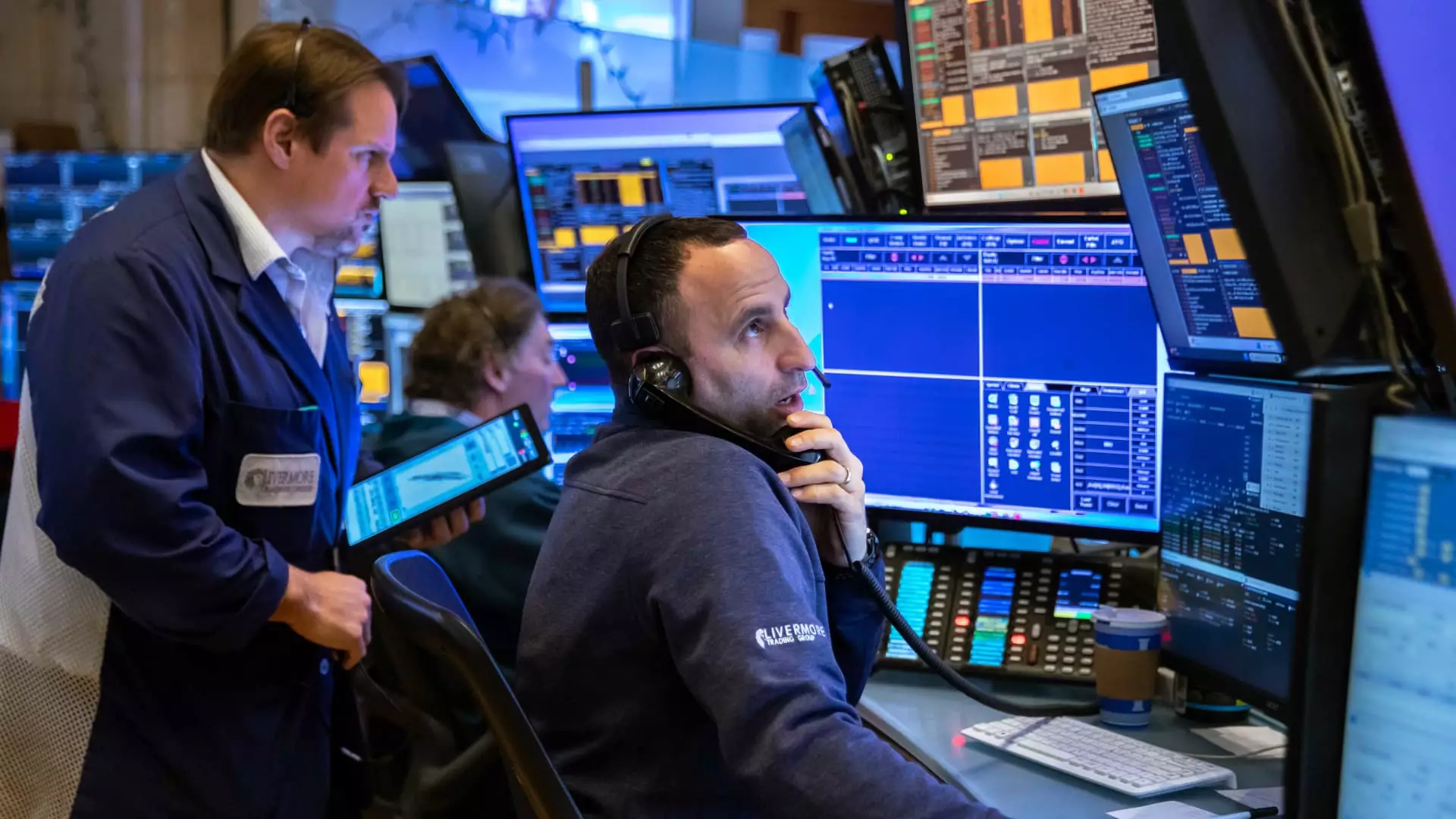As the new trading month begins, stock futures have taken a significant hit, reflecting investors’ apprehensions surrounding recent developments in U.S. trade policy. The latest tariffs announced by President Trump have already started to cast a shadow over market prospects. On Sunday night, futures associated with the Dow Jones Industrial Average dropped by 528 points, marking a decline of about 1%. The S&P 500 and Nasdaq-100 futures showed even steeper losses, plummeting by 1.9% and 2.7%, respectively. This downward trend poses the question of how these tariffs will influence economic momentum and corporate profitability going forward.
The urgency of the tariffs cannot be overstated, as President Trump recently imposed a 25% tariff on goods from Canada and Mexico, in addition to a 10% tax on imports from China. Collectively, these countries account for approximately $1.6 trillion in trade with the United States. In retaliation, Canada has announced its own set of tariffs, while Mexico is deliberating a similar response. China’s announcement about seeking legal action against the U.S. at the World Trade Organization further complicates the landscape, creating uncertainty that has unsettled investors.
The Risks of Escalating Trade Tensions
Tobin Marcus, the head of U.S. policy and politics at Wolfe Research, expressed the growing concern that the financial markets may need to brace for a more serious interpretation of Trump’s trade agenda. If the market reacts swiftly to this new reality, Monday could witness a substantial downturn. The weighing factors—combined with the upcoming wave of earnings reports—create a challenging backdrop for investors who are now grappling with how much longer this trade conflict may continue and how it might affect the financial landscape.
The significance of this earnings season cannot be overstated. Over 120 companies within the S&P 500 are set to disclose their quarterly results, spanning a variety of sectors, including technology giants like Alphabet, Amazon, and Palantir, as well as well-known consumer brands such as Walt Disney and Mondelez. Investors will be keenly watching these reports, as they will provide critical insights into the health of businesses amid revenue challenges stemming from tariff-induced anxieties.
Looking Ahead: Employment Reports and Market Performance
Additionally, the upcoming nonfarm payrolls report will shed light on the employment status for January. With economists predicting an addition of 175,000 jobs and the unemployment rate remaining steady at 4.1%, this data will play a vital role in determining whether the economy is robust enough to withstand trade disputes. After a rollercoaster few weeks, U.S. markets displayed some resilience as January ended with gains. The S&P 500 saw an increase of 2.7%, and the technology-heavy Nasdaq Composite rose by 1.6%. The Dow Jones Industrial Average, in particular, outperformed significantly, surging by 4.7%.
As investors navigate through these turbulent waters, the interconnectedness of international trade dynamics and corporate earnings has never been more apparent. The outcomes of ongoing negotiations, retaliatory measures, and the upcoming economic reports will be crucial in shaping market sentiments as the year unfolds. The volatility observed in recent weeks serves as a reminder that the global economy is intricately linked, and the impacts of tariffs extend beyond borders, influencing market stability on a broader scale.


Leave a Reply